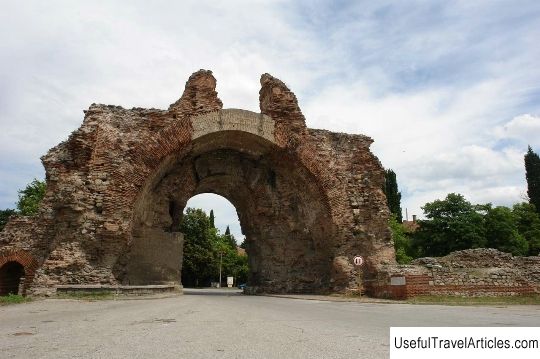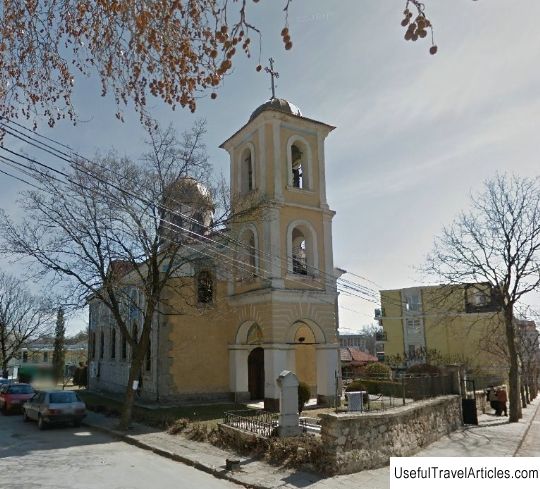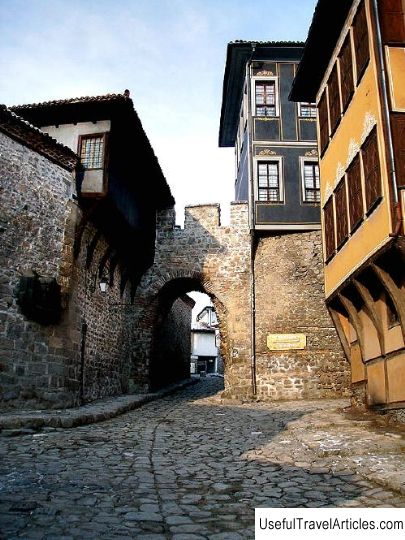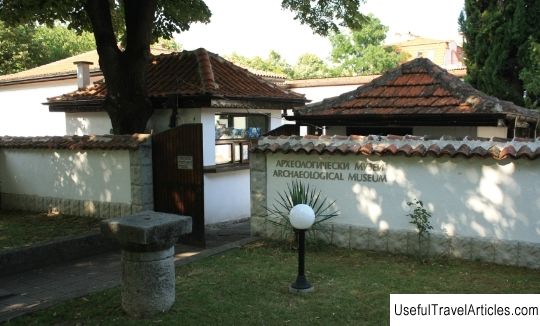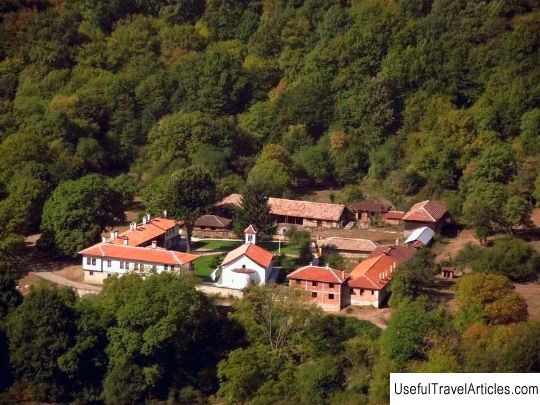Roman tomb description and photos - Bulgaria: Hisar
Rating: 8,4/10 (700 votes) 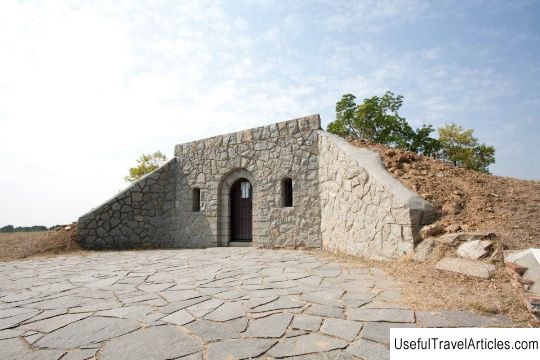
Roman tomb description and photos - Bulgaria: Hisar. Detailed information about the attraction. Description, photos and a map showing the nearest significant objects. Photo and descriptionIn the center of Bulgaria, 40 kilometers from Plovdiv and 180 kilometers from Sofia, there is the town of Hisarya. People began to settle in this area as early as the 6-5th centuries BC. After the ancient Thracians who founded the settlement, in the 3rd century this place was chosen by the Romans, who built the city of Diocletianopolis here. The name Hisarya comes from the Turkish word for a fortress - hisar. The Hisarya Roman tomb is part of the Hisar fortress of the 4th century - one of the best-preserved fortifications in Bulgaria. The complex is an irregular quadrangle in shape and covers an area of approximately 30 hectares. The wall of the ancient city, the average length of which was 2.5 thousand meters, was double from the north, the distance between the outer and inner walls was about 10 meters. From the south, the wall was surrounded by a moat, the depth of which is 4 meters, width - 10-12 meters. 43 quadrangular towers strengthened the fortress, four gates, the main of which were the southern ones - Kamilite (`` camel ''), served as the entrance to the structure. During archaeological excavations inside and outside the fortress wall, many buildings of the ancient city were discovered , different in structure and purpose - public buildings, baths, barracks, colonnades, amphitheater, villas, Christian basilica, churches and necropolises. Scientists have found five tombs from the late antique period. The most famous and largest in size is the Hisar Tomb, designated as Tomb No. 3. It is located three hundred meters south-west of the fortress wall in the park Slaveev Dol. This is a Roman family tomb, the construction of which dates back to the 4th century, is a complex of a burial chamber, stairs and a vaulted corridor. Hisar tomb has survived to modern days in almost its original form. The corridor and walls of the tomb are covered with paintings depicting roses, and the floor of the burial chamber is covered with skillful four-color mosaics. The territory of the ancient ancient city with the entire complex of architectural monuments is an archaeological reserve of national importance and is called Diocletianopolis.     We also recommend reading Fondaco dei Turchi description and photos - Italy: Venice Topic: Roman tomb description and photos - Bulgaria: Hisar. |
